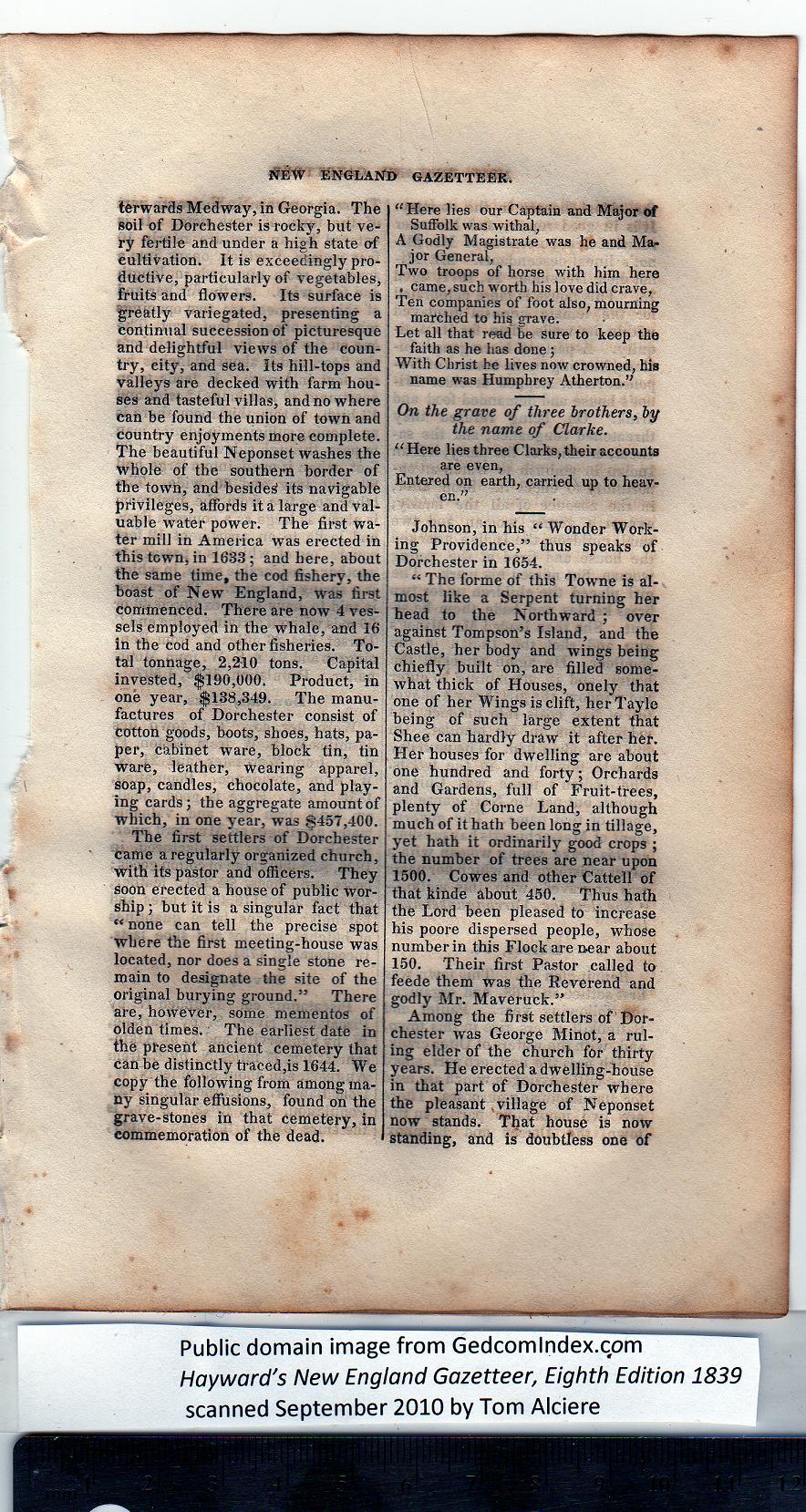|
terwards Medway, in Georgia. The
soil of Dorchester is rocky, but ve-
ry fertile and under a high state of
cultivation. It is exceedingly pro-
ductive, particularly of vegetables,
fruits and flowers. Its surface is
greatly variegated, presenting a
continual succession of picturesque
and delightful views of the coun-
try, city, and sea. Its hill-tops and
valleys are decked with farm hou-
ses and tasteful villas, and no where
can be found the union of town and
country enjoyments more complete.
The beautiful Neponset washes the
whole of the southern border of
the town, and beside^ its navigable
privileges, affords it a large and val-
uable water power. The first wa-
ter mill in America was erected in
this town, in 1633; and here, about
the same time, the cod fishery, the
boast of New England, was first
commenced. There are now 4 ves-
sels employed in the whale, and 16
in the cod and other fisheries. To-
tal tonnage, 2,210 tons. Capital
invested, $190,000. Product, in
one year, $138,349. The manu-
factures of Dorchester consist of
cotton goods, boots, shoes, hats, pa-
per, cabinet ware, block tin, tin
ware, leather, wearing apparel,
soap, candles, chocolate, and play-
ing cards; the aggregate amount of
which, in one year, was $457,400.
The first settlers of Dorchester
came a regularly organized church,
with its pastor and officers. They
soon erected a house of public wor-
ship ; but it is a singular fact that
“none can tell the precise spot
where the first meeting-house was
located, nor does a single stone re-
main to designate the site of the
original burying ground.” There
are, however, some mementos of
olden times. The earliest date in
the present ancient cemetery that
can lie distinctly traced,is 1644. We
copy the following from among ma-
ny singular effusions, found on the
grave-stones in that cemetery, in
commemoration of the dead. |
“Here lies our Captain and Major of
Suffolk was withal,
A Godly Magistrate was he and Ma-
jor General,
Two troops of horse with him here
, came, such worth his love did crave,
Ten companies of foot also, mourning
marched to his grave.
Let all that read Be sure to keep the
faith as he has done;
With Christ he lives now crowned, his
name was Humphrey Atherton.”
On the grave of three brothers, by
the name of Clarke.
“Here lies three Clarks, their accounts
are even,
Entered on earth, carried up to heav-
en.”
Johnson, in his “ Wonder Work-
ing Providence,” thus speaks of
Dorchester in 1654.
“ The forme of this Towne is al-
most like a Serpent turning her
head to the Northward ; over
against Tompson’s Island, and the
Castle, her body and wings being
chiefly built on, are filled some-
what thick of Houses, onely that
one of her Wings is clift, herTayle
being of such large extent that
Shee can hardly draw it after her.
Her houses for dwelling are about
one hundred and forty; Orchards
and Gardens, full of Fruit-trees,
plenty of Corne Land, although
much of it hath been long in tillage,
yet hath it ordinarily good crops ;
the number of trees are near upon
1500. Cowes and other Cattell of
that kinde about 450. Thus hath
the Lord been pleased to increase
his poore dispersed people, whose
number in this Flock are near about
150. Their first Pastor called to
feede them was the Reverend and
godly Mr. Maveruck.”
Among the first settlers of Dor-
chester was George Minot, a rul-
ing elder of the church for thirty
years. He erected a dwelling-house
in that part of Dorchester where
the pleasant village of Neponset
now stands. That house is now
standing, and is doubtless one of |
